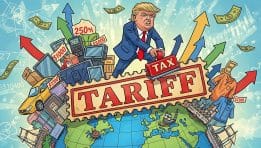Pakistan and US Forge Trade Agreement on Oil Reserves and Tariffs
A recent trade agreement between Pakistan and the United States marks a significant step forward for both nations, particularly in oil reserve development and tariff reduction. This agreement fosters collaboration, aiming for mutual economic growth and enhanced energy security.
Boosting Oil Reserve Development
Oil is a vital resource for any economy, and for Pakistan, developing its oil reserves is crucial. The United States, a major oil producer, brings valuable technology, expertise, and investment to the table. This synergy is set to transform how both nations address their energy needs.
A key aspect of this agreement is the potential for technological exchange. Advanced U.S. methods for oil exploration and extraction, such as hydraulic fracturing and enhanced oil recovery, could significantly increase Pakistan’s oil production. This could enable Pakistan to meet domestic energy demands and potentially become an oil exporter.
Furthermore, reduced tariffs create a more favorable trading environment. Lower tariffs mean reduced costs for imported equipment and technology vital for oil exploration. This financial relief allows Pakistan to invest more in infrastructure and the training of local engineers and workers, thereby enhancing its oil industry’s capabilities and efficiency.
The agreement also allows the U.S. to diversify its energy partnerships, reducing dependency on single sources and tapping into a growing South Asian market. This mutual benefit extends beyond energy, fostering stronger ties between the two nations and contributing to regional stability. As Pakistan gains energy independence, it becomes less vulnerable to external shocks, leading to enhanced security and sustained economic growth. Increased oil production from Pakistan could also impact global oil prices, potentially offering relief to importing nations worldwide.
To maximize the agreement’s potential, focused strategies are essential:
- Improving Infrastructure: Investing in pipelines, refineries, and transport systems is crucial for efficient oil extraction and distribution.
- Building Local Expertise: Training programs for local workers and engineers will ensure the full realization of technology transfer benefits.
- Establishing Regulatory Frameworks: A clear, supportive legal framework can attract more foreign investment and promote stability in the oil sector.
- Promoting Sustainable Practices: Integrating environmentally friendly practices is vital to minimize ecological impact during oil development.
Strategies for Tariff Reduction
The growing economic partnership between the U.S. and Pakistan highlights the need for effective strategies to reduce tariffs and promote smoother trade relations. Lowering tariffs can lead to enhanced economic cooperation, attracting investments, and boosting trade in both countries.
Tariffs, which are taxes on imported goods, significantly impact trade costs. High tariffs can create obstacles, making goods more expensive for consumers and reducing business competitiveness. Understanding their impact is crucial for developing reduction strategies.
To effectively lower tariffs, both countries can explore various actionable strategies:
- Negotiating Trade Agreements: Diplomatic discussions can lead to bilateral trade agreements focused on tariff reductions, identifying common goals for mutual benefit.
- Promoting Special Economic Zones (SEZs): Establishing SEZs in Pakistan with reduced tariffs can attract U.S. investors, stimulating local economies.
- Engaging in Multilateral Trade Forums: Participation in international forums allows for broader tariff reduction negotiations and strengthens relationships with other trade partners.
- Supporting Local Industries: Investing in technology and resources for Pakistani industries can enhance their global competitiveness, reducing import dependence and fostering a more balanced tariff structure.
- Eliminating Non-Tariff Barriers: Collaborating to simplify stringent regulations and quality controls can make trade easier.
In the oil and energy sector, specific strategies can yield substantial effects:
- Joint Ventures: Encouraging joint ventures in oil exploration and refining can reduce costs by pooling resources and expertise.
- Technology Transfer: Facilitating technology transfers can significantly enhance Pakistan’s oil industry, promoting self-sufficiency and creating opportunities for U.S. companies.
- Investing in Infrastructure: Improvements in Pakistan’s oil infrastructure, such as pipelines and storage facilities, can reduce overall transportation costs and associated tariffs.
Public and political support is also crucial. Awareness campaigns highlighting the benefits of reduced tariffs can generate public support and encourage policymakers. Continuous diplomatic engagement between U.S. and Pakistani leaders is essential for addressing concerns and fostering trust.
Establishing benchmarks and regularly assessing economic indicators and trade volumes will provide valuable insights into the effectiveness of tariff reduction strategies, allowing for necessary adjustments.
By implementing these strategies, Pakistan and the U.S. stand to gain significantly from a vibrant trade relationship, leading to increased economic growth, job creation, and improved bilateral relations.
Comparison, examination, and analysis between investment houses
Leave your details, and an expert from our team will get back to you as soon as possible
* This article, in whole or in part, does not contain any promise of investment returns, nor does it constitute professional advice to make investments in any particular field.
To read more about the full disclaimer, click here- Articles
- •
- 11 Min Read
- •
- ago 11 minutes
 ARE WALL STREET ANALYSTS BULLISH ON INVITATION HOMES STOCK?
ARE WALL STREET ANALYSTS BULLISH ON INVITATION HOMES STOCK?
Are Wall Street Analysts Bullish on Invitation Homes Stock? Investor Sentiment and Market Outlook Invitation Homes, a leading single-family rental
- ago 11 minutes
- •
- 11 Min Read
Are Wall Street Analysts Bullish on Invitation Homes Stock? Investor Sentiment and Market Outlook Invitation Homes, a leading single-family rental
- Articles
- •
- 10 Min Read
- •
- ago 37 minutes
 Blue Chip Stocks at Rare Discounts: Is 2025 the Dow’s Window of Opportunity?
Blue Chip Stocks at Rare Discounts: Is 2025 the Dow’s Window of Opportunity?
Introduction: “Discounts” Among Blue Chips—What’s Behind the Numbers? The American stock market, and particularly the Dow Jones Industrial Average, has
- ago 37 minutes
- •
- 10 Min Read
Introduction: “Discounts” Among Blue Chips—What’s Behind the Numbers? The American stock market, and particularly the Dow Jones Industrial Average, has
- Articles
- •
- 10 Min Read
- •
- ago 60 minutes
 EUROPE INC WAKES UP TO TRUMP’S NEW TARIFF REALITY
EUROPE INC WAKES UP TO TRUMP’S NEW TARIFF REALITY
The Impact of Trump's New Tariff Reality on Europe's Economy As the global economy adapts to shifting political landscapes, Europe
- ago 60 minutes
- •
- 10 Min Read
The Impact of Trump's New Tariff Reality on Europe's Economy As the global economy adapts to shifting political landscapes, Europe
- Articles
- •
- 11 Min Read
- •
- ago 1 hour
 The 50 Largest Companies in the World (July 2025): Mapping Global Corporate Power and Economic Influence
The 50 Largest Companies in the World (July 2025): Mapping Global Corporate Power and Economic Influence
Who Really Runs the Global Economy? The July 2025 ranking of the world’s 50 largest companies by market capitalization provides
- ago 1 hour
- •
- 11 Min Read
Who Really Runs the Global Economy? The July 2025 ranking of the world’s 50 largest companies by market capitalization provides












